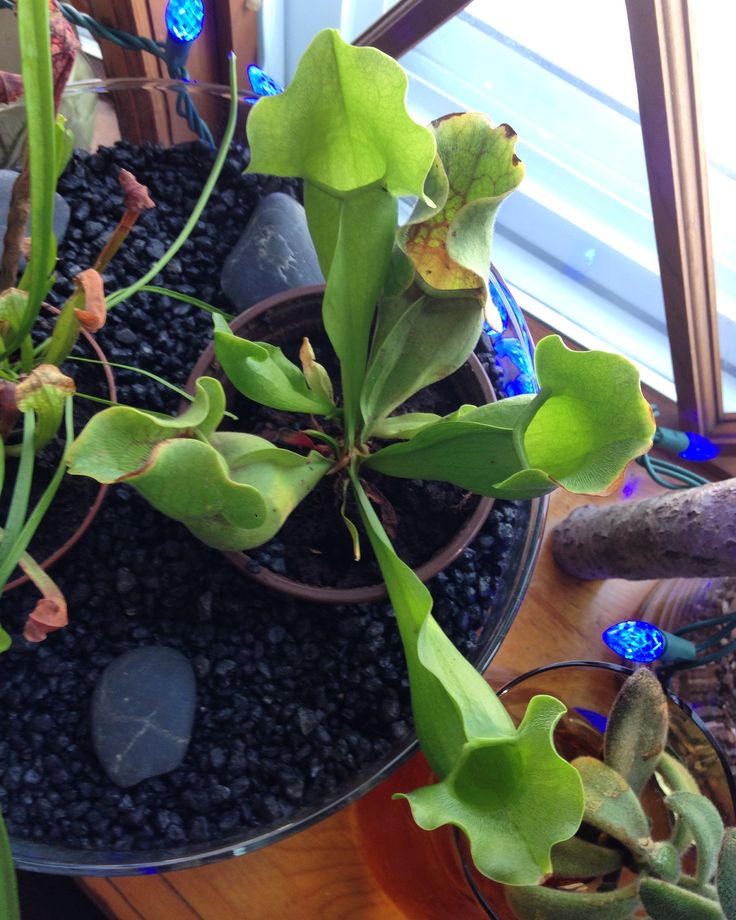How To Care For A Pitcher Plant Outdoors
Pitcher plants go through a dormant period in the winter months, so they don't thrive when planted in tropical climates or when tended indoors. Not only is the purple pitcher plant a great way to get rid of bugs and pests, but it looks cool in the process.
If growing your pitcher plants indoors, the perfect temperature range is between 60 and 70 degrees fahrenheit.

How to care for a pitcher plant outdoors. You may also dig out the plant remove the soil and dead leaves and keep it in a sealed bag with some moss. Avoid dripping cold water on the leaves. For pitcher plants, you can keep a good amount of water in the tray.
Nepenthes can live for many years with proper care. The water level in the tray can be deep enough to immerse half of the pot. Pick a location that gets five or more hours a day of direct sun.indoor growing under lights is usually difficult and sarracenia prefer strong sun.
Indoor pitcher plants should also be fed insects occasionally. Purpurea can stay outdoors in a sheltered location. Pitcher plants are the type of carnivorous plant that sits and waits for bugs to fall into their pitcher traps.
For the optimal environment, grow pitcher plants in a bog garden. For more information on pitcher plant care, you can read this article: After the plant has flowered, it will continue growing stems.
Adding air to the water can help growth by reducing the chance of stagnation. The information can help you decide on the best strategy for outdoor vs. North american pitcher plants are easy to grow and efficient flycatchers.
Besides watering, humidity, and feeding, keeping the pitcher plant in good shape requires that you ensure it has room to grow and is protected: Growing pitcher plants outdoors and pitcher plant care starts with the site and soil. This carnivorous plant originally grows in swampy, humid areas, but can also be grown indoors with a bit of dedication and effort.
And it expands on care considerations for outdoor growing. Fertilize again each month until the fall. Pitcher plants are perennials that thrive in full sun with ample water, and they do best in acid soil.
Clip off all the dead leaves with scissors when the winter dormant period begins. Learn more about the many beautiful species of sarracenia, including alata, flava, leucophylla, minor, oreophila, psittacina, purpurea & rubra, and discover how best to care for these fantastic carnivorous plants. Garden grown pitcher plants should be placed in a container that can hold water.
How to grow pitcher plant: Pitcher plants require minimal care and can be grown both indoors and outdoors. The easiest method is to keep the pot (with the plant) in a tray of water.
Watering pitcher plants can be a tricky scenario. All other varieties should be brought in to a cool covered location, such as a garage or unheated basement. This is because they have reduced exposure to insects, and thus, require a substituent nutrition source.
Use any type of pot for indoor plants and provide a low fertility mixture in which the plants will grow. The trick is holding enough water so the lower portion of the roots is wet but the top portion of the growing medium is out of the water. It includes a downloadable care sheet!
Purpurea and the parrot pitcher, s. Pitcher plant care, especially indoors, is actually exceptionally easy. Caring for pitcher plants in winter in colder zones will require you to bring them indoors.
When watering, make sure that water runs out the bottom of your pots. A complete pitcher plant care guide. This is due to the high humidity level necessary to grow a healthy pitcher plant, and the fact that the soil needs to stay humid at all times of the year, be it with indoor or outdoor growth of the pitcher plant.
How to care for pitcher plants. Purple pitcher plant care similar to the storied and famous venus fly trap , purple pitcher plants are a carnivorous plant species. Reduce water and do not fertilize when providing pitcher plant care over.
Generally, pitcher plants do not require much maintenance, but pruning a pitcher plant occasionally produces a more vigorous plant. Care of pitcher plants outdoors. For families looking for a plant that will draw their kid’s attention, the purple pitcher plant makes an interesting choice.
This way, plant will always continue growing throughout its life. Indoor plants require fertilization at the beginning of the growing season.

3881994286_51b1ba0df8_o.jpg Plants, Carnivorous plants

Prodigious How to make a vertical garden wall hanging pot

Pitcher plants are several different carnivorous plants

Sobriety is Never Owned, it's Rented Carnivorous plants

Grow Carnivorous Plants in a DIY MiniBog Brooklyn

Growing Pitcher Plants Indoors How To Care For A Pitcher

Photo The pretty pinks and greens of a pitcher plant

Nepenthes Alata Carnivorous Pitcher Plants / I Eat Bugs

Carnivorous plants pitcher vines seo seo2020 gardens

Pitcher Plant Care Growing Different Types Of Pitcher

How To Grow And Care For A Venus Flytrap Hunker Venus

NEPENTHES CARE TIPS WATERING NEPENTHES ROBCANTLYII BONGSO

Hanging Pitcher Plant Care Types Of Pitcher Plants For

Nepenthes ampullaria Carnivorous plants, Pitcher plant

Home Garden Equipment Container gardening, Carnivorous

This weekend it's all amount the Pitcher Plant. They

A Nepenthe tropical pitcher plant. Pitcher plant



Posting Komentar untuk "How To Care For A Pitcher Plant Outdoors"